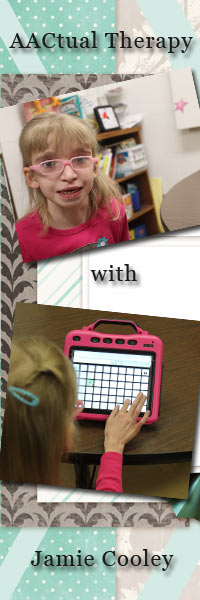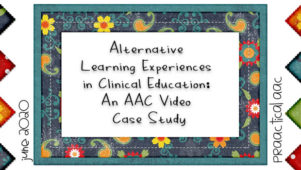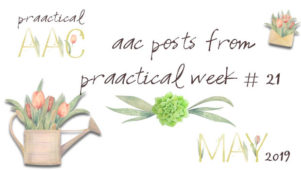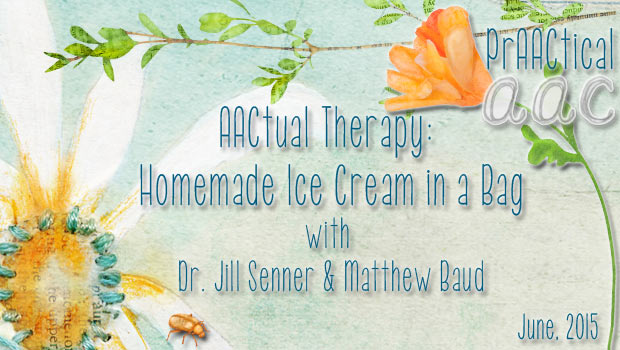AACtual Therapy: AAC Learning with Play Dough by Jamie Cooley
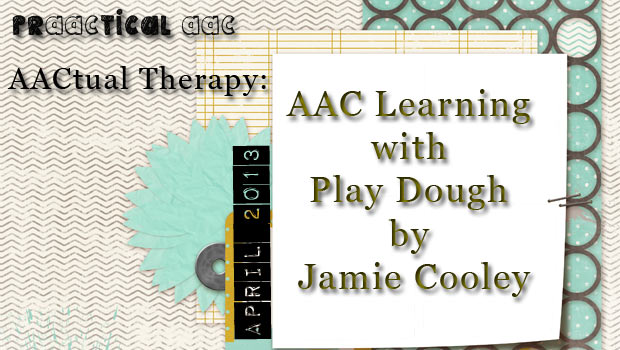
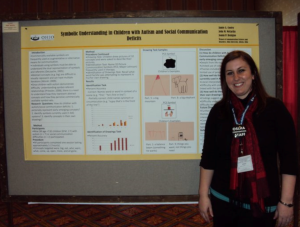 Today, we’re happy to introduce you to another AACtual Therapist, Jamie Cooley, the SLP for Belpre City Schools (belpre.k12.oh.us), located in Belpre, OH. She is a graduate of Ohio University (B.S. ’09, M.A. ’11) and currently resides in Athens, OH. Jamie did work at Ohio University focusing on AAC and children with autism under the instruction of Dr. John McCarthy and Dr. Joann Benigno. She has worked for Belpre City Schools for two years with students in grades K-12. In this post, Jamie uses a case study approach to share a lesson using Play Dough.
Today, we’re happy to introduce you to another AACtual Therapist, Jamie Cooley, the SLP for Belpre City Schools (belpre.k12.oh.us), located in Belpre, OH. She is a graduate of Ohio University (B.S. ’09, M.A. ’11) and currently resides in Athens, OH. Jamie did work at Ohio University focusing on AAC and children with autism under the instruction of Dr. John McCarthy and Dr. Joann Benigno. She has worked for Belpre City Schools for two years with students in grades K-12. In this post, Jamie uses a case study approach to share a lesson using Play Dough.
Emma is a third grade student. She was born with hypoplastic left heart syndrome, and her cognitive and communication skills are significantly below age-norms. She receives most of her academic instruction in a resource room. Communicatively, Emma repeats many words and phrases, and combines up to two words on her own. This is a huge change in the past year! Last year we heard a lot of one word labels. Most of her spontaneous communication is to direct others (e.g. telling you what she wants, or her current favorite “what’s that?”). She is aided by pictures to help her with word finding. Emma has an extremely supportive family. As in, you should be jealous I get to work with them. Seriously, you can’t ask for anyone better!
Emma recently received funding for a Vantage Lite (PrentkeRomich Company). It’s hot pink, obviously…This kid is more stylish than I am! We started working on core vocabulary using Vocab Builder in January. She is using a 64 key sequenced screen, meaning she has to push at least two buttons to access a word. Emma is showing success at remembering sequences for highly motivating words (especially “more”!). Our overall goals for Emma are to request using two words on her device or three words verbally and to answer questions and comment using one or more words in any modality. Requesting has been the primary focus of therapy sessions, as Emma is most motivated to communicate to direct behavior.
Therapy Session
Target vocabulary: Want, Help, Turn, More, color words
Goal: Using two or more words to request items or activities, commenting on actions
We used play-dough and accessories to set up communication temptations. Emma will initiate communication and persist if she is interested in the activity. My biggest difficulty in eliciting output from Emma is that she is very agreeable. If you give her the wrong item, she will still take it and be happy. I have found that the best way to target her expressive language is when she initiates. My play-dough set includes colored cookie cutters, plastic knives, rolling pins, etc. I kept all of the accessories in a mesh bag so that she could see but not access what she wanted. Further, Emma’s fine motor strength is below average, so making sure containers are tightly closed ensured that she would have the opportunity to request help.
How It Went
This was the first time I had targeted “help” on Emma’s device. She uses the phrase “help me please” in specific situations, but has trouble generalizing without a cue. My intention is that the visuals on the AAC device will provide her with cues to increase her verbal output and aid in intelligibility for unfamiliar listeners. With a couple of hand over hand trials, Emma was able to use the “help” key with minimal visual prompting. Emma requested “more” or color words for accessories using a one-word phrase, however she required hand over hand or moderate physical prompting (i.e. moving arm to the correct half of screen) to get Emma to make a two word request. She also gets confused with which verb to use, such as “want” or “get,” so sometimes she will push any word and then “more” instead of “want” and then “more.” I need to figure out better ways to teach Emma 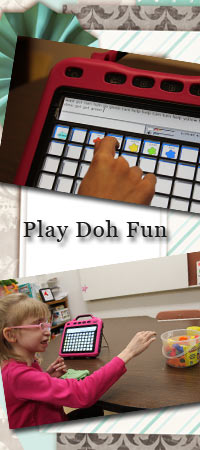 what each of the targeted words means.
what each of the targeted words means.
What I Would Change
I need to work on making our activities more socially interactive. Emma is very person-oriented and I am beginning to think that I need to incorporate more person-centered activities, such as songs and rhymes, etc. It is difficult finding communication opportunities that are meaningful as well as directed with Emma. As I mentioned, she is agreeable to nearly anything, so finding activities that excite her seem to be the key to teaching her the true meanings of the symbols
Filed under: PrAACtical Thinking
Tagged With: AACtual therapy, case study, Jamie Cooley, Play Doh, play dough
This post was written by Carole Zangari
